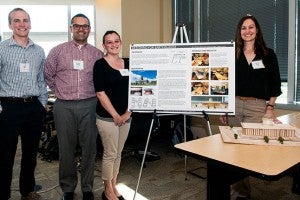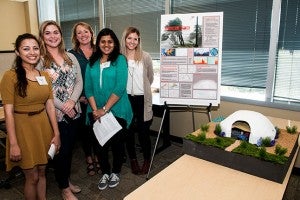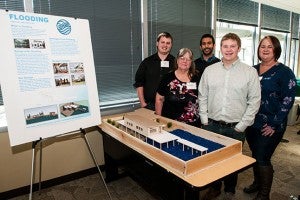
This past spring, University of Idaho and Boise State University brought two seemingly different disciplines—architecture and public health—together in one graduate course to look at how structures may be built or retrofitted to survive and minimize long-term catastrophe during natural disasters.
Kasama Polakit, associate professor of architecture at the University of Idaho, and Uwe Reischl, professor of health sciences at Boise State University, integrated Architecture 504: Built Environment and Public Health, and Master of Health Science 560: Public Health Disaster Preparedness Planning. Polakit and Reischl co-taught the first half of the class sessions on the Boise State campus and the latter half at the University of Idaho Urban Design Center on the University of Idaho Boise campus.

After studying theory and various types of natural and manmade disasters, the students broke into interdisciplinary teams of at least two architecture and two health science students on each team for their final projects. Each team researched a specific type of disaster, looked at architectural case studies and developed and built a model structure that would survive the assigned disaster.
Results included plans to retrofit Salt Lake City’s state capitol building to withstand earthquakes, a hurricane-safe residence and a house on stilts built to survive a flood.
On April 26, the students presented their projects to professors, classmates and invited community members, including Sue Chew, Idaho Legislature Representative; Randy McLeland, planning manager for Central District Health Department’s Office of Public Health Preparedness; and representatives from the media. The group discussed the roles of socio-economics and building logistics and how each vary by region when designing safer buildings.

Boise State health science student, Jeannie Weitensteiner, said her perspective changed as she conversed with architecture students. As a group, the students viewed the class as a success and hope it will be offered again. All agreed that they learned a lot about communication and teamwork—tools and strategies that they recognize will serve them well as they launch their careers.